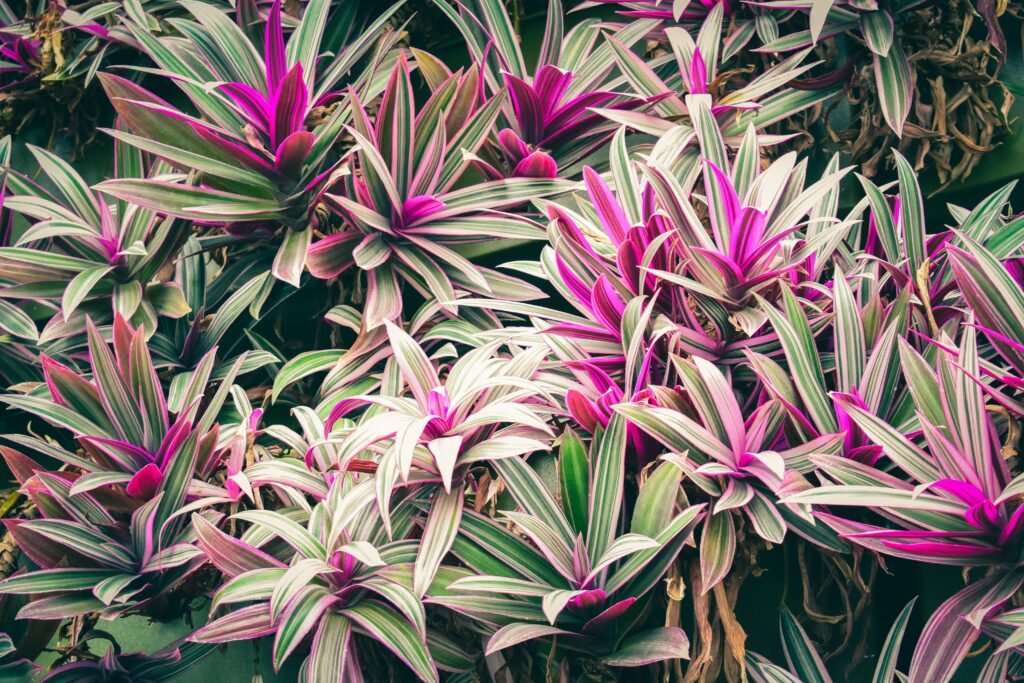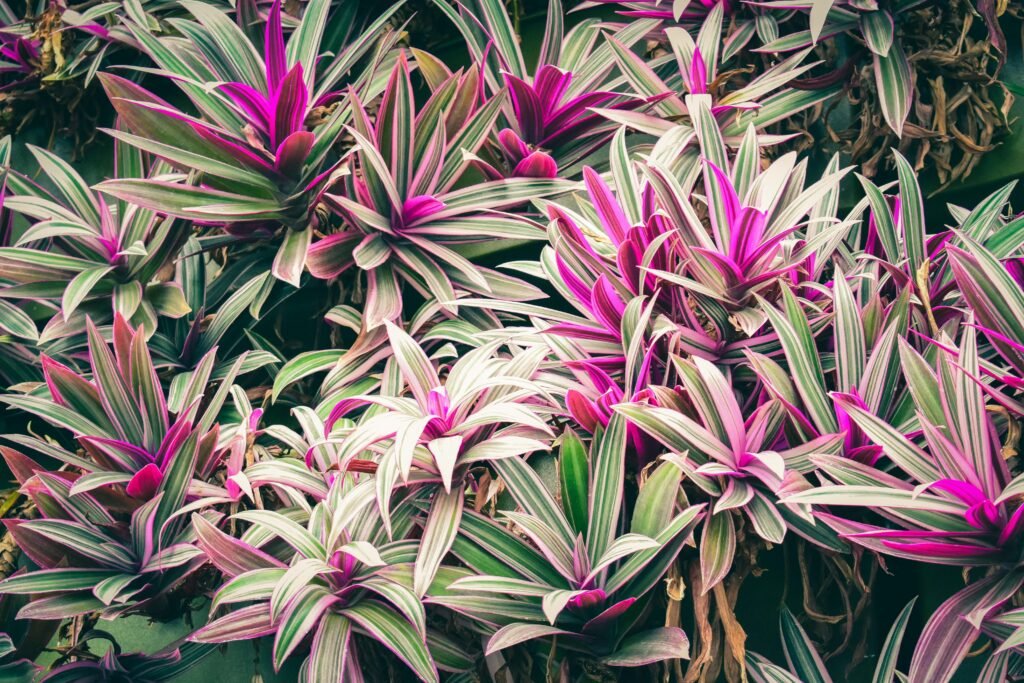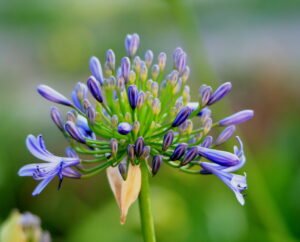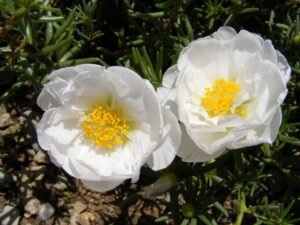How To Plant, Grow, And Care For Ti Plant

Ti Plant - Cordyline fruticosa
The Ti plant, also known as “Good Luck Plant,” is native to Southeast Asia and the Pacific Islands. Scientifically known as Cordyline fruticosa, it is a broadleaf evergreen tropical flowering plant in the family Asparagaceae. Known for its stunning foliage, the Ti plant is very popular among gardeners. If you are smitten by this plant and want to add it to your plant collection but are unsure how to properly care for it, look no further, as this article explains in detail how to plant, grow, and care for the Ti plant.

Ti plants hold significant cultural importance in many regions where they are grown. In Hawaiian culture, for example, Ti plants are considered sacred and are often used in rituals and ceremonies. They are believed to bring good luck and protection from evil spirits. In other cultures, Ti plants are used for medicinal purposes or as a source of food.
Facts About Ti Plant
While the Ti plant is most commonly referred to as Cordyline fruticosa, it is also known by several other names. Some of the other names for the Ti plant include Good Luck Plant, Hawaiian Ti Plant, Red Sister, Cabbage Palm, Palm Lily, and False Dracaena, etc.
Ti plants come in a wide range of varieties, each with its unique characteristics and colors. The leaves of Ti plants can be variegated, striped, or solid in color, with shades of green, red, purple, and even pink. Some popular Ti plant varieties include:
- Red Sister: This variety features vibrant red leaves that add a bold pop of color to any space.
- Black Magic: With its deep purple-black foliage, this Ti plant variety creates a dramatic and mysterious look.
- Chocolate Queen: The leaves of this variety have a rich chocolate-brown color, perfect for adding warmth to your garden.
- Ruby: As the name suggests, this Ti plant variety showcases stunning ruby-red leaves that are sure to catch attention.
In addition to their aesthetic appeal, Ti plants also have air-purifying properties. They are known to remove harmful toxins such as formaldehyde, benzene, and xylene from the air, making them an excellent choice for indoor spaces. Having Ti plants in your home can help improve air quality and create a healthier environment.
Ti plants are not only great for adding beauty to your garden or indoor space but also have various practical uses. Here are some ways you can incorporate Ti plants into your everyday life:
- Landscaping: Use Ti plants as focal points in your garden or as borders to create a tropical paradise.
- Indoor Décor: Place Ti plants in decorative pots and use them as statement pieces in your living room, bedroom, or office.
- Lei Making: In Hawaiian culture, ti leaves are commonly used to make leis, which are traditional garlands worn for special occasions.
- Medicinal Purposes: Some cultures use Ti plants for their medicinal properties. The leaves and roots are believed to have various health benefits.
- Culinary Uses: In certain Pacific Island cuisines, ti leaves are used for cooking. They are often used to wrap food before grilling or steaming, imparting a unique flavor.
FAQ About Ti Plant
Can I grow a Ti Plant indoors?
Yes, Ti plants can be grown indoors as long as they receive adequate light. Place them near a window with bright, indirect light. If the light is insufficient, you can supplement it with artificial grow lights. Indoor Ti plants may require more frequent misting to increase humidity levels.
Is Ti Plant toxic to pets?
Unfortunately, every part of the Ti plant has toxic substances, saponins and glycosides, which are toxic in nature. Therefore, you will need to take extra care to keep it out of your pets’ reach if you have any.
Right Location For Ti Plant
The first step in successfully growing a Ti plant is choosing the right location. Ti plants thrive in bright, indirect light, so it’s important to find a spot that provides these conditions. If you’re growing your Ti plant indoors, place it near a window that receives bright, filtered light. If you’re growing it outdoors, choose a spot that is partially shaded. Though the Ti plant prefers to get 4-6 hours of direct sunlight, it is good to provide partial shade during hot afternoon hours. Too much direct sunlight and heat can scorch its leaves and cause browning.
In low-light conditions, the foliage of the Ti plant will become more green, and it will lose its attractive, bright color.
It’s also important to consider the temperature when choosing a location for your Ti plant. These plants prefer temperatures between 65°F and 85°F (18°C and 29°C). Avoid placing your Ti plant in drafty areas.
How to Plant Ti Plant
Once you’ve chosen the perfect location for your Ti plant, it’s time to plant it. Here’s a step-by-step guide on how to plant your Ti plant:
- Start by selecting a pot that is large enough to accommodate the root ball of your Ti plant. To avoid waterlogging, make sure the pot includes drainage holes at the bottom.
- Fill the pot with a well-draining potting mix. To improve the soil’s quality, you can also incorporate some organic matter, like compost.
- Carefully remove the Ti plant from its nursery container, taking care not to damage the roots.
- Place the Ti plant in the center of the pot and backfill with soil, gently firming it around the roots.
- To help the soil settle and eliminate any air pockets, give the plant thorough watering.
Once planted, make sure to place your Ti plant in its designated location, following the guidelines mentioned earlier.
How To Care For Your Ti Plant
Now that your Ti plant is planted, it’s important to provide it with the proper care to ensure its health and vitality. Here are some essential care tips for your Ti plant:
Watering
Ti plants prefer slightly moist soil, but they don’t like to sit in waterlogged conditions. Before watering your Ti plant, check the moisture level of the soil. Check to see if the soil feels dry by inserting your finger about one inch into it. If it’s still moist, hold off on watering.
The frequency of watering your Ti plant will depend on various factors such as the climate, humidity levels, and the size of the plant. In general, aim to water your Ti plant once every 7-10 days. However, always monitor the soil moisture to adjust the watering schedule accordingly.
Fertilizing
Organic fertilizers are an excellent choice for Ti plants as they provide slow-release nutrients and improve soil quality. One of the best options is compost, which enriches the soil and provides a wide range of essential nutrients. You can either use homemade compost or purchase it from a garden center.
Another organic option is seaweed or kelp extract, which is rich in minerals and growth hormones. It promotes root development and enhances the overall health of the Ti plant. You can find seaweed or kelp extract in liquid form, which can be diluted and applied to the soil.
If you want to use chemical fertilizer you can use NPK fertilizer for your Ti plants. When selecting an NPK fertilizer for your Ti plants, it’s important to consider the specific needs of these plants. Generally, a balanced NPK ratio such as 10-10-10 or 20-20-20 is suitable for Ti plants.
It’s crucial to take into account the micronutrients that the fertilizer contains in addition to the NPK ratio. Ti plants benefit from micronutrients such as iron, magnesium, and manganese. Look for a fertilizer that includes these elements to ensure comprehensive nutrition for your Ti plants.
Feed your Ti plant with a balanced, water-soluble fertilizer every two to four weeks during the growing season (spring and summer).
Pruning
Regular pruning helps to maintain the shape and size of your Ti plant. Cut off any leaves that are yellowing or dead at the base of the stem. You can also trim back any overgrown branches to encourage bushier growth.
Pest Control
Although ti plants are generally pest-resistant, mealybugs and spider mites might occasionally be drawn to them. Use an insecticidal soap or neem oil spray on the plant if you see any indications of an infestation, such as webbing or small white insects. Follow the instructions on the product package for best results.
Winter Care
Ti plants, are tropical plants that thrive in warm and humid conditions. Ti plants are sensitive to cold temperatures and can suffer damage if exposed to frost or freezing conditions. It’s crucial to bring your Ti plants indoors or provide them with adequate protection when the temperature drops below 50°F (10°C). Place them in a warm and well-lit area, away from drafts and cold windows.
During winter, Ti plants require less water as their growth slows down. Avoid overwatering, as it can lead to root rot. Allow the top inch of soil to dry out before watering and ensure proper drainage to prevent waterlogged roots. It’s always better to underwater than to overwater your Ti plants during the winter months.
How To Propagate Ti Plant
If you want to expand your Ti plant collection or share it with friends, you can propagate Ti plants through stem cuttings. Here’s how:
- Select a healthy stem from your Ti plant.
- Cut a 6-inch section of the stem just below a leaf node.
- Reduce the number of leaves at the top by removing the lower ones.
- Make sure the cutting’s nodes are completely immersed by submerging it in a glass of water.
- Keep the glass in a warm, bright location, and change the water every few days.
- After a few weeks, new roots will be formed and will be visible.
- Once the roots are about an inch long, you can transfer the cutting to a pot with well-draining soil.
With the right care and attention, your Ti plant will thrive and bring a touch of tropical beauty to your garden or indoor space. Remember to choose a suitable location, provide proper watering and fertilization, and keep an eye out for pests. With these simple steps, you’ll be able to enjoy the beauty of your Ti plant for years to come.





